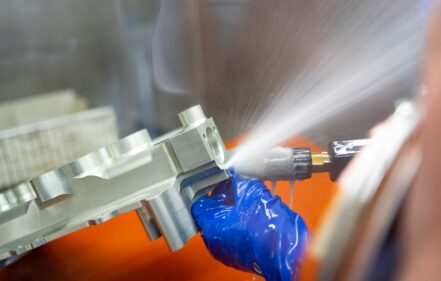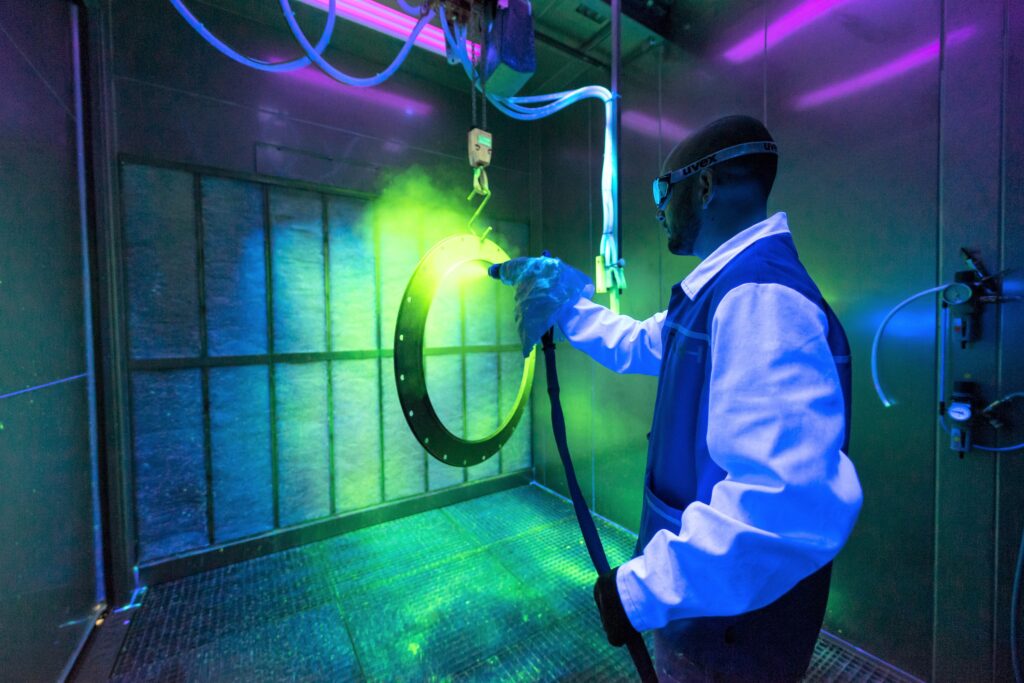

Fluorescent Penetrant Inspection (FPI) or Dye Penetrant Inspection is a standard non-destructive process, which is well-established for the inspection of mechanical parts at different steps of their life cycle (manufacturing, repair, etc.). It is widely used in the aeronautics industry where it is defined as a special process. Dye penetrant inspection is a nondestructive inspection process (the integrity of the part is not impacted by this process), that can detect non obstructed defects on the inspected part surface. The standard defects that can be inspected for are cracks, surface discontinuities, porosities, etc. Dye penetrant inspection can be performed on any type of metal part, of any grade and for any type of manufacturing (casting, forging, machined parts, parts assembled by welding, additive manufactured parts). This inspection can also be used in some cases for plastic parts, composite materials, and ceramic and plasma coatings.
Dye penetrant inspection is based on the application of a fluorescent penetrant liquid (called « penetrant ») on the surface of the part to be inspected. This liquid penetrates surface defects, such as cracks and nicks, as well as surface irregularities or discontinuities. After an adequate penetration time, the excess penetrant is removed by rinsing and a «developer» is applied to absorb the penetrant located in the surface discontinuities. This developer draws penetrant from defects onto the surface and the penetrant then forms a colored stain. Visual inspection of colored indications helps to characterize the defects. The fluorescent penetrant can be seen under UV light, and defines detection sensitivity. Different penetrants can be used according to the required detection sensitivity.
The advantages of dye penetrant inspection are the following: non-destructive inspection, ease of implementation, cost
Our company has on automated line and one manual fluorescent penetrant inspection booth for large parts.
An automated line with the following features :
A manual dye penetrant inspection booth for large parts :
Our inspection agents have a FrANDTB level 2 certification, and we work with a certified FrANDTB level 3 agent
TMH-novatec performs dye penetrant inspection operations for aeronautics parts (aircrafts and helicopters) mainly. These parts can be washers with a diameter of a few millimeters or spacers with a 1600mm diameter. The inspected parts may have been manufactured by using any process and be of any type of metal alloy (aluminum, Inconel, stainless steel, titanium, etc.). Our expertise lies in the inspection of reactor and turbine parts, from blade compressors to accessories (fan blades, actuators, gear box housings, hydraulic circuit components, etc.).
We work with the major aeronautic groups, such as Safran Aircraft Engines, Safran Helicopter Engines, Liebherr, etc.
